
I skipped work yesterday to tag along with my friend, T, to Silpakorn University Sanam Chan Campus in Nakhon Pathom Province, 56 km away from Bangkok. T is taking his PhD in education at the said university, one of the top schools in Thailand, and last night he presented his paper on the education of street children in the Philippines. Since I assisted him with the paper, he invited me over to his presentation wherein I also answered a few questions about education back home (or what little I know about it).
The highlight of the trip was visiting Sanam Chandra Palace that sits on the edge of the campus. The palace complex, composed of a dozen or so buildings of varying sizes and materials, served as a retreat and residence of King Rama VI (1910-1925), as well as a training ground for the Wild Tigers Corps, a para-military troop. Meandering around the immaculate palace grounds are a series of ponds spanned by small bridges.
(Warning, serious camwhoring ahead... of course!) I swear I had one long, continuous orgasm while walking around the complex, seeing all those well-preserved architectural treasures.
I swear I had one long, continuous orgasm while walking around the complex, seeing all those well-preserved architectural treasures.
I especially went berserk when I saw the Phra Tamnak Chalimongkhon-at, a castle-like structure influenced by English Romantic style (completed in 1917). I’ve seen it featured in a book and had since been curious to see its quirky moat and bridge. And who would've guessed I would simply stumble into it? It’s a thing of fancy really, I found my self beaming like a child while crossing the bridge towards the two-story “castle”. On the opposite end of the bridge is an equally enticing red building that houses some memorabilia and photographs of King Rama VI. The preservation efforts for the building earned it Thailand’s Architectural Conservation Award in 1997.
(Photos were not allowed inside any of the buildings, by the way.)
 While most of the buildings in the complex were patterned after Western styles, the Phra Tamnak Tab Khwan (completed in 1911) was designed according to Central Thai traditional style. It originally served as the headquarters of the Scouts in the King Rama VI period. Mostly made of wood, the house stands on stilts and is capped with swooping roofs that give it a sense of flight. In 1984, the house was conferred an Architectural Conservation Award.
While most of the buildings in the complex were patterned after Western styles, the Phra Tamnak Tab Khwan (completed in 1911) was designed according to Central Thai traditional style. It originally served as the headquarters of the Scouts in the King Rama VI period. Mostly made of wood, the house stands on stilts and is capped with swooping roofs that give it a sense of flight. In 1984, the house was conferred an Architectural Conservation Award.
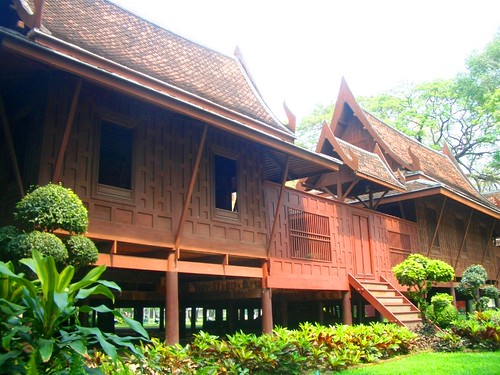 Walking towards the other side of the complex, I came upon the Bhimarn Prathom Residence, a Western-style building replete with ventilation panes and elaborate railings to suit the hot climate. The house is a maze-like affair, with dozens of rooms and chambers connected by a series of fancy walkways. As a piece of architecture, the house is superb but it can really benefit from a bit of wise interior decorating to veer it away from its current gaudy interior (how about some historical context dear?).
Walking towards the other side of the complex, I came upon the Bhimarn Prathom Residence, a Western-style building replete with ventilation panes and elaborate railings to suit the hot climate. The house is a maze-like affair, with dozens of rooms and chambers connected by a series of fancy walkways. As a piece of architecture, the house is superb but it can really benefit from a bit of wise interior decorating to veer it away from its current gaudy interior (how about some historical context dear?).
 My last stop was a section of the campus that showcases eccentric sculptures, Silpakorn being the top art school in Thailand.
My last stop was a section of the campus that showcases eccentric sculptures, Silpakorn being the top art school in Thailand.
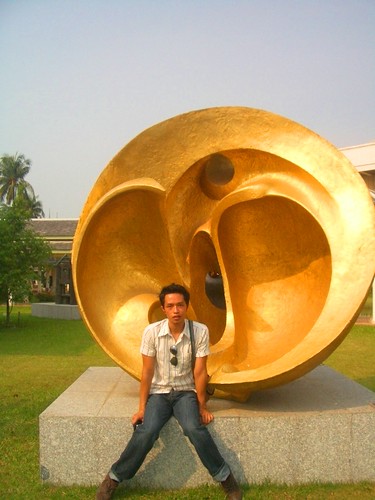
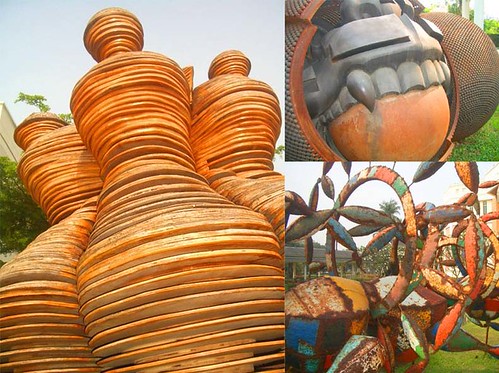


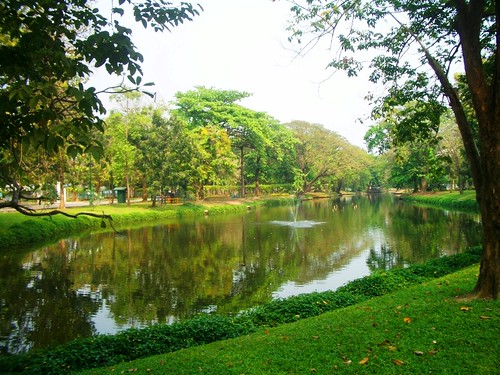
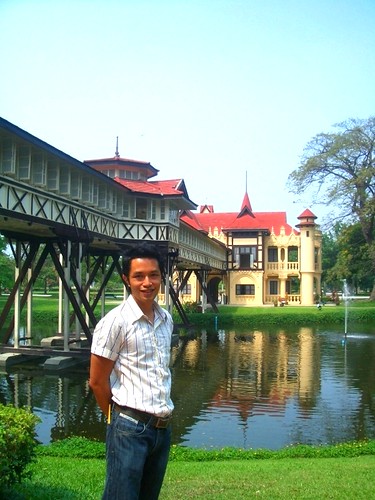

5 comments:
vungga yung sumususo na sculpture ah. very sustagen. very nido. very 'breast feeding is best for babies'drama.
'got milk?' ka rin ba dyan?
As much as Sanam Chandra Palace is the epitome of Thai palace construction, it marked the the beginning of the end of absolute monarchy in Thailand.
King Rama VI's reign was a period of decline and economic difficulties. Perhaps, it was very hard to replicate the success of King Rama V's reign
don: hahahaha. korak. suso kung suso! at malaki yan ha.
mr rainbow man: wonderful architecture indeed! thanks for the historical insight. :-)
wow! kalaong ko hurot mo na pagpicture tanan sa thailand. jaon pay baja mga nangabilin na wowowee sab. grabe gajud inin thailand sa architecture noh.
hi jun! thanks for visiting.
yeah, fascinating architecture are found all around this country.
so, bisita na!
Post a Comment